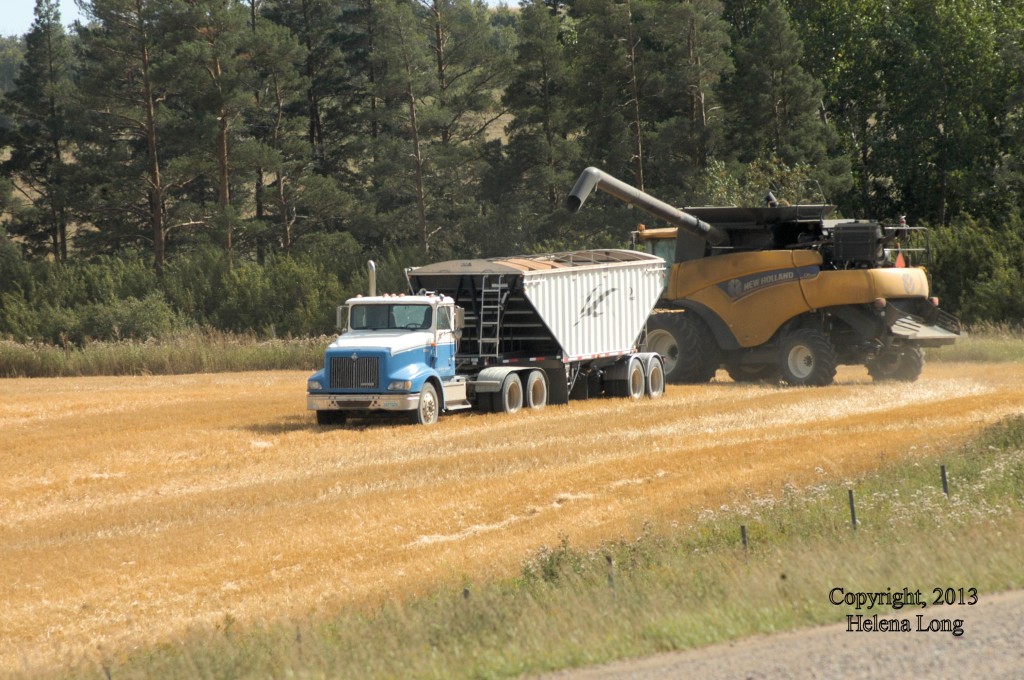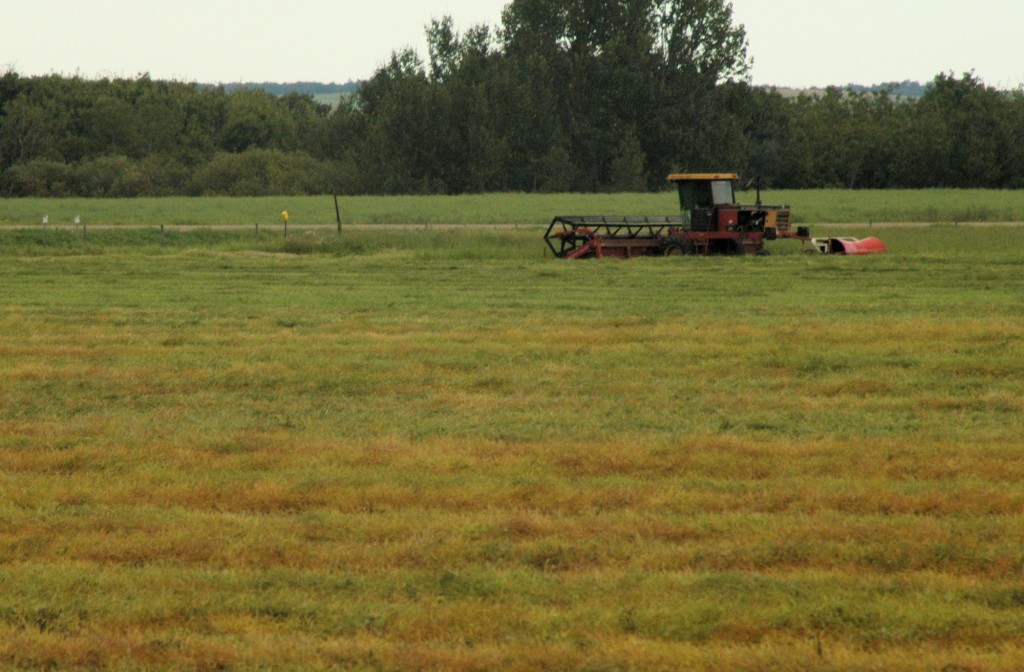
The combine rounds a grain truck on its way back to the field to pick up and process more golden swaths of canola.
The latest Saskatchewan Crop Report released by the Saskatchewan Ministry of Agriculture September 12, covering the week of September 3 to 9, reports great harvest progress and bounteous crops.
Province-wide, the report said:
Significant harvest progress was made this week, allowing Saskatchewan farmers to move ahead of the five-year harvest average. Thirty per cent of the 2013 provincial crop is combined and 36 per cent is swathed or ready to straight-cut, according to Saskatchewan Agriculture’s weekly Crop Report. The five-year average (2008-2012) for this time of year is 28 per cent combined and 31 per cent swathed or ready to straight-cut.
Harvest is most advanced in the southwestern region, where 46 per cent of the crop is combined. Twenty-eight per cent is combined in the southeast; 23 per cent in the east-central region; 38 per cent in the west-central region; 15 per cent in the northeast and 16 per cent in the northwest. Warm weather over the past few weeks has helped speed crop development.
Of the crop that has been harvested, above-average yields are being reported in most areas. Spring wheat average yields are reported as 43 bu/ac, barley 66 bu/ac, canola 35 bu/ac, lentils 1600 lb./ac and peas 42 bu/ac. Average yields vary from region to region, depending on seeding conditions and growing season moisture.
Thunderstorms later in the week dropped over 60 mm of rain in some parts of the south. Province-wide, the week’s rainfall ranged from nil to 86 mm. Grasshoppers, wind and heavy rains caused the majority of the reported crop damage.
Across the province, topsoil moisture on cropland is rated as three per cent surplus, 59 per cent adequate, 30 per cent short and eight per cent very short. Hay land and pasture topsoil moisture is rated as one per cent surplus, 54 per cent adequate, 35 per cent short and 10 per cent very short. Some areas in the western and central regions are very dry, affecting pasture productivity.
Farmers are busy desiccating, swathing and combining.
And in West-Central Saskatchewan:
Thirty-eight per cent of the 2013 crop is combined and 38 per cent is swathed or ready to straight-cut. Most areas recorded no rain during the week, allowing combines to keep moving in the field. Rainfall in the region ranged from nil to 8 mm (Craik area). Crop districts 6B and 7A have 41 per cent combined and Crop District 7B has 32 per cent combined. Crop reporters are indicating yields are well above average in most areas of the region.
Topsoil moisture conditions are rated as 31 per cent adequate, 46 per cent short and 23 per cent very short on cropland. Hay land and pasture topsoil moisture conditions are rated as 21 per cent adequate, 44 per cent short and 34 per cent very short. All crop districts in the region are reporting over half of the cropland and hay land is short of topsoil moisture. Crop District 6B is reporting 44 and 50 per cent of cropland and hay land and pasture, respectively, are very short of topsoil moisture. Soil conditions are very dry in the region, as most areas have not had a significant amount of rain for a month or more. Dry conditions have resulted in a few grass, stubble or combine fires.
Grasshopper populations are high, but very little damage was reported as most crops are into the maturity stages. Dry conditions are causing the majority of crop stress. High winds in crop districts 7A and 7B caused some canola swaths to blow around. Producers are busy harvesting and hauling hay.




